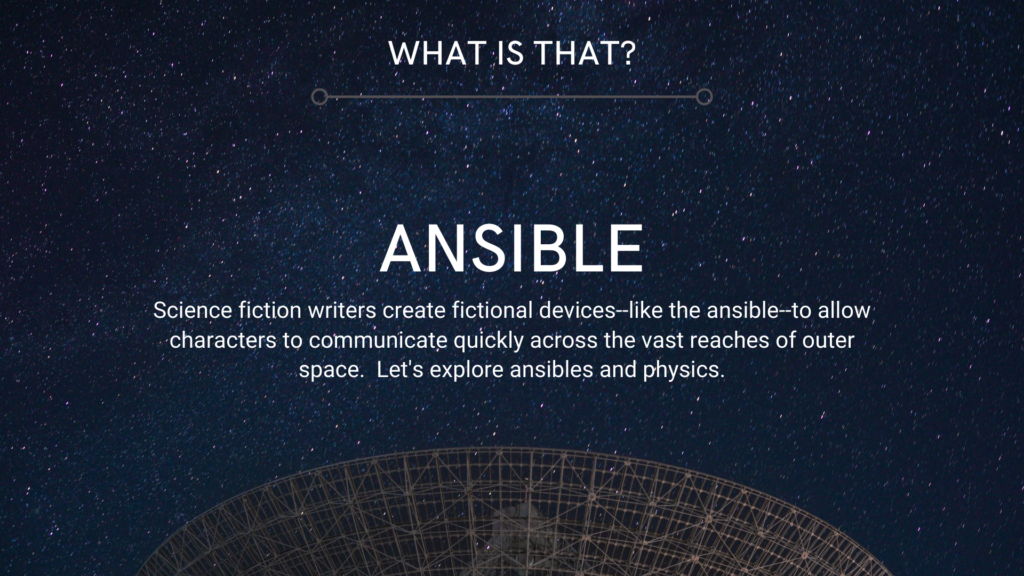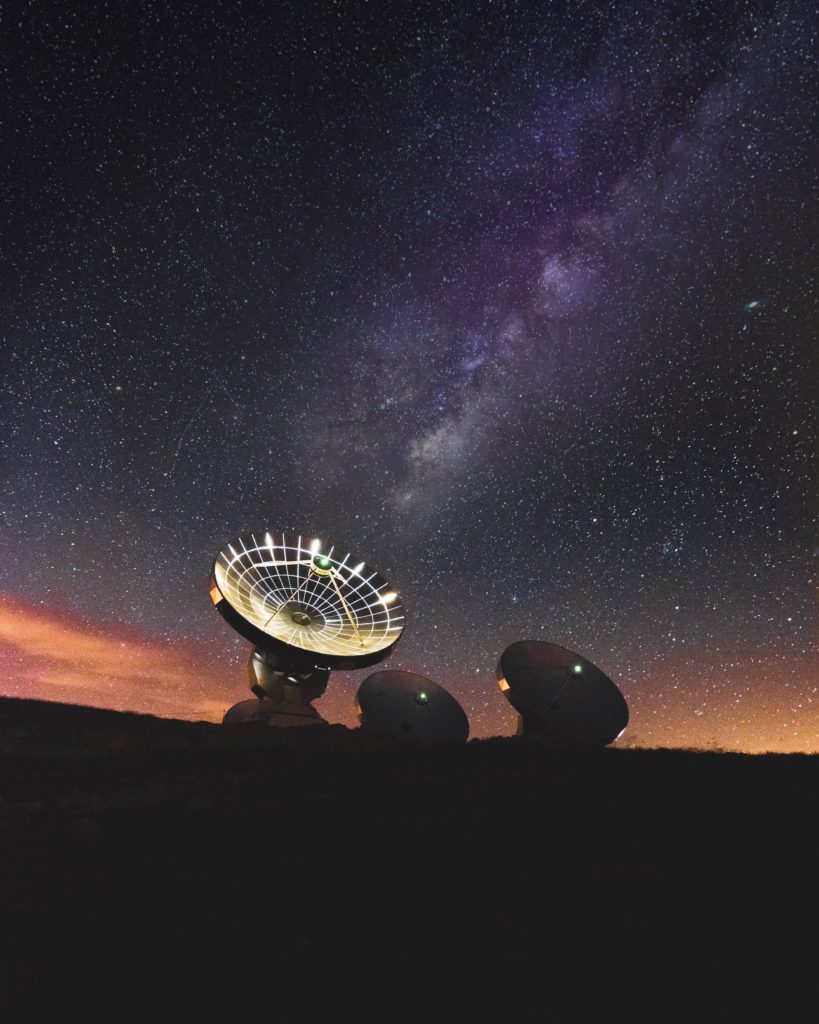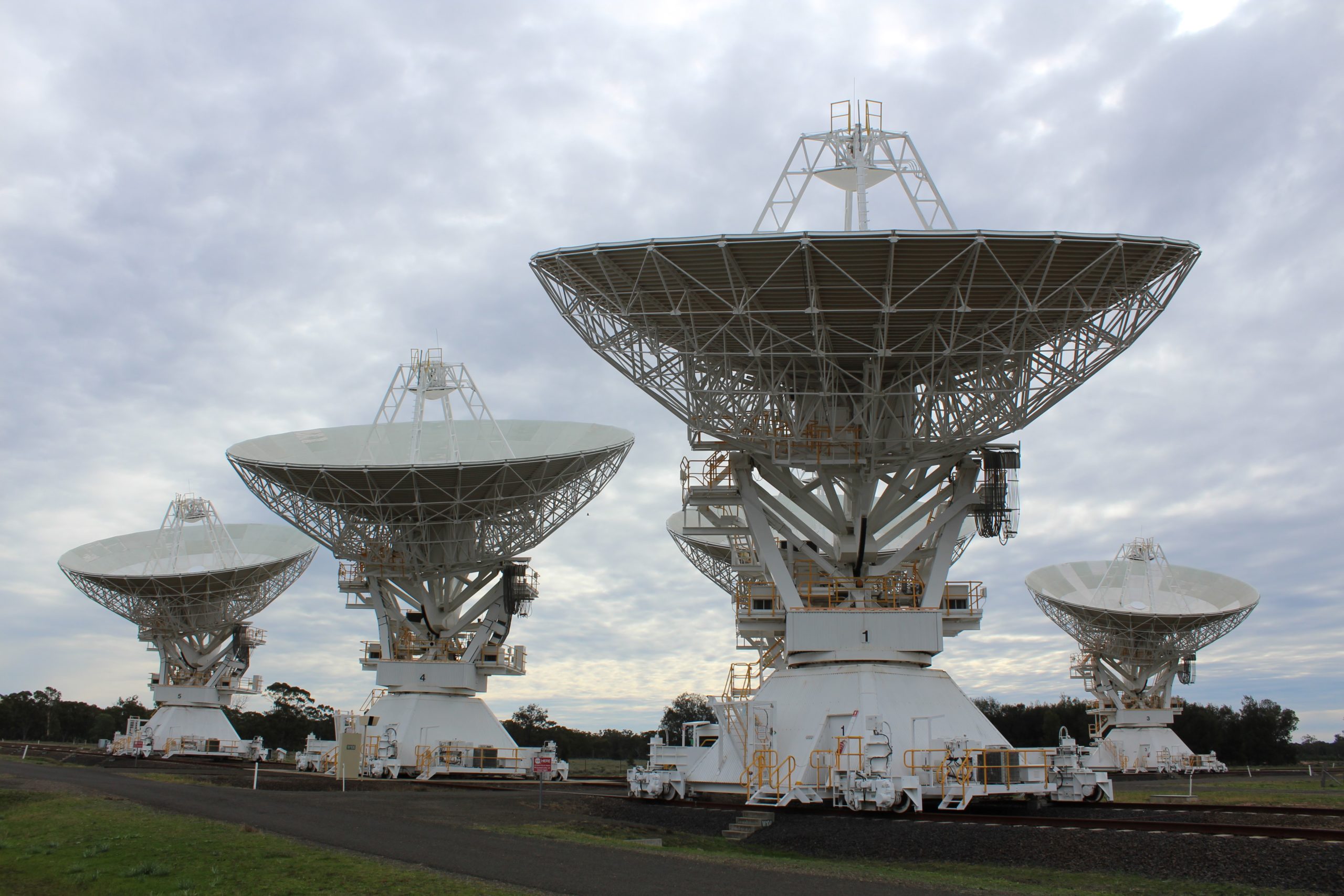
Ansible — a machine used for instant communication across vast distances of space.
Sci Fi writers have created many fictional devices that allow people to talk, write, or send messages instantly or very quickly across the vast empty stretches of space.

The legendary Ursula LeGuin created the word “ansible” in her 1966 novel Rocannon’s World. She described a device that could be used to send instant text messages to anyone else with an ansible.
LeGuin used the ansible in later books as well. By the way, “ansible” is a shortening of the word “answerable,” so-named because the device allowed a person to type a question that could get an “answerable” reply in a reasonable amount of time.
Why do Sci Fi writers need a fictional device?
Why did Le Guin need a fictional communication device? Why couldn’t her characters just send messages using an antenna that sends radio waves?
The problem is the speed of radio waves and the great distances between solar systems.
The Speed of Light
In empty space, radio waves travel at the speed of light. According to the great physicist Albert Einstein, nothing can travel faster than the speed of light. Even though his theory is more than 100 years old, it is still hard for most people to understand. That’s probably because in our daily lives, the only thing we see traveling at those speeds is light itself. And individual light particles–called photons–are too small and too fast for us to detect with our eyes.

Light has no mass. It is pure energy. That’s why it can reach such a high speed. But for things with mass–things made out of atoms like you and me and everything we own–we gain mass the faster we travel. At the fastest speeds that humans and machines can travel, the change is barely noticeable. But if you send a ship rocketing through space, the closer it gets to the speed of light, the more its mass grows.
A spaceship floating in space has no weight. But it still has mass. To push it forward faster than it is already traveling requires more energy. Einstein’s law says that the faster you make the ship fly, the more mass it has. That means each time you try to add speed, you need more energy than the last push. Before the ship could ever reach the speed of light, you would run out of energy.

What does the speed of light have to do with communication across space?
In science fiction, we often write and read about people traveling to planets in far away solar systems. It takes years for light–even traveling as fast as light does–to reach a planet in another solar system. That means that a communication system that uses radio waves, light or lasers to send messages to a planet outside our solar system would take years. More than a lifetime, if the planet is not near one of our neighboring stars.
Why don’t Sci Fi writers use something real–some technology that we know–other than light or radio waves to send messages then? Well, because nothing travels faster than the speed of light.

Long distance communication in Sci Fi
It’s hard to write a gripping Sci Fi story if the heroes on a distant planet send an urgent message back home to Earth and then must wait 20, 50 or even a 100 years to receive the reply. Sometimes Sci Fi writers want to tell stories where humans living on different worlds or in spaceships far apart can still talk to each other or communicate in some way.
That’s why LeGuin created the fictional ansible. So her heroes could send messages back home and receive orders from their superiors.
Create your own device!
What kind of fictional device can you imagine to instantly communicate between Earth and a space ship light years away? What would you call it? How would it work?
Please post your comments below.
Be stellar!
Matthew Cross



I quite liked what Dan Simmons named his ansible in the Hyperion Cantos tetralogy: the fatline (ie, the FTL-line).
Patrick,
Oh, wow, what a great reference! Hyperion!!!
I have not read that in years. I’ve never had a discussion with anyone that has read it, either. You’ve made this cold, dark region of space seem a lot friendlier!
Thanks so much for your comment. I give you all the bonus points I have for mentioning a great book and providing such great detail. And you are absolutely right, the “fatline” is a great name for a fast and large data line of information across space.
Please visit again soon!
Be stellar!
Matthew
Some sci-fi just does it and doesn’t even bother to explain it. It’s a lot like our own cell phones. We just pick it up and use it and we don’t think how it works. So, in the story, you just do it, and don’t bother explaining it. Kylo and Rey’s heads are linked in the force. Why? Who cares? How? Doesn’t matter. Why only them? Because. Drama.
I do think it’s good for the creator to think it through, and have some rationale, though.
Mark,
Those are some very good points, and thanks for your post!
I’ll springboard off your great points with a couple more thoughts.
1) It depends if the idea is new in Sci Fi or popular culture. When Ursula K. LeGuin wrote her books, it may have been a newer concept and needed some explaining. Or, by explaining it, she made it seem more wondrous. But once it is a common trope, it no longer needs explaining.
2) It depends on whether the book is intended as “hard science fiction” or the softer stuff. In my opinion, both are great. But in Hard Sci-Fi, readers expect the physics to work. And when you want to break the laws of physics as we know them, you’d better explain how future technology makes it possible. But for softer Sci-Fi, apply the same rule as with well-known tropes. And, as you say, bring on the drama!
Be stellar!
Matthew